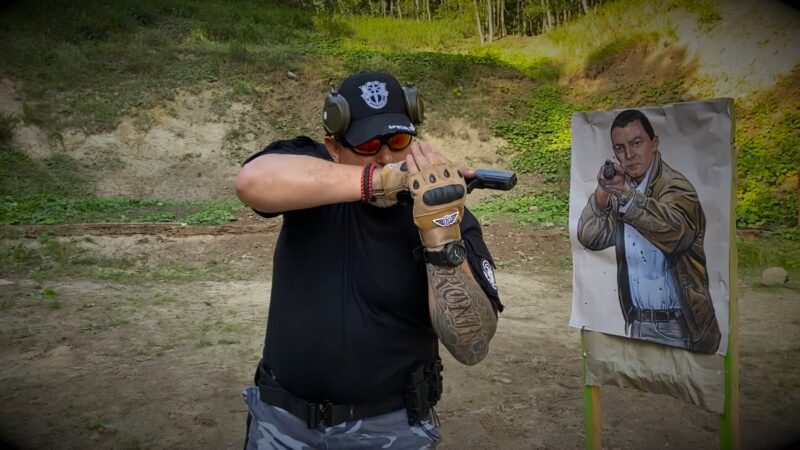The Center Axis Relock (CAR) is a new way of holding and using guns, especially in tight spaces. It’s designed to help shooters have better control, shoot faster, and be more accurate.
Both police officers and regular people who use guns are taking notice of CAR. If you’ve heard about CAR but don’t really know what it is or why people like it, this guide is for you.
In our “Center Axis Relock Explained: Beginner’s Guide,” we’ll break down what CAR is and why it’s helpful for today’s gun users.
History
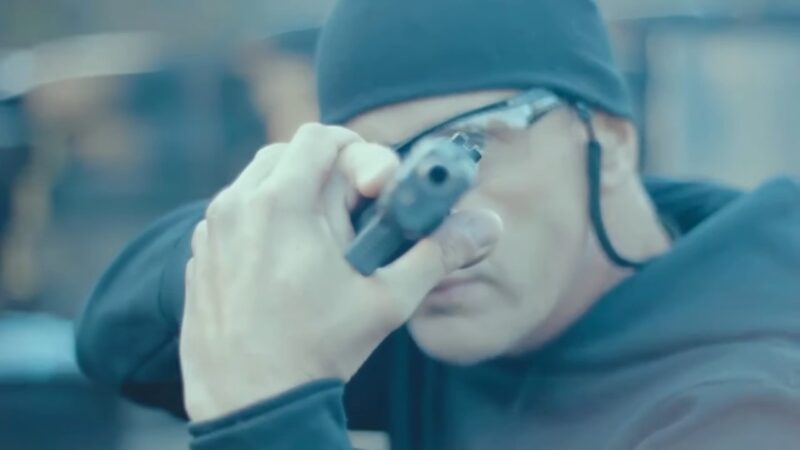
Paul Castle, a British firearms instructor, introduced the CAR system in the late 20th century. Recognizing the limitations of traditional shooting stances in real-world combat situations, Castle sought to create a method that would be both effective and versatile.
Over the years, CAR has undergone refinements based on feedback from law enforcement and military personnel, making it a dynamic and evolving system.
Fundamentals
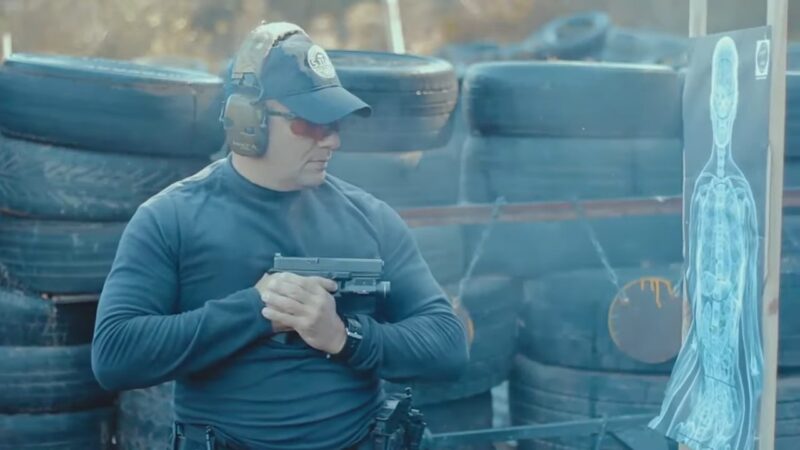
The Center Axis Relock shooting stance is built on a set of core principles that define its effectiveness and adaptability. Here’s a closer look at these fundamentals:
Body Alignment
The alignment of the shooter’s body along the firearm’s centerline is a defining feature of CAR. This orientation ensures that the body efficiently absorbs the recoil, maintaining a stable platform for accurate shooting.
By aligning the body’s core with the direction of the shot, the shooter can better control the weapon and respond to threats more quickly.
Grip
The grip in CAR involves holding the firearm’s grip with the strong hand while positioning the support hand on the back of the slide or frame. This dual grip technique enhances control over the weapon, allowing for more precise aiming and handling.
The support hand’s placement adds stability, particularly during rapid firing, where control is paramount.
Stance
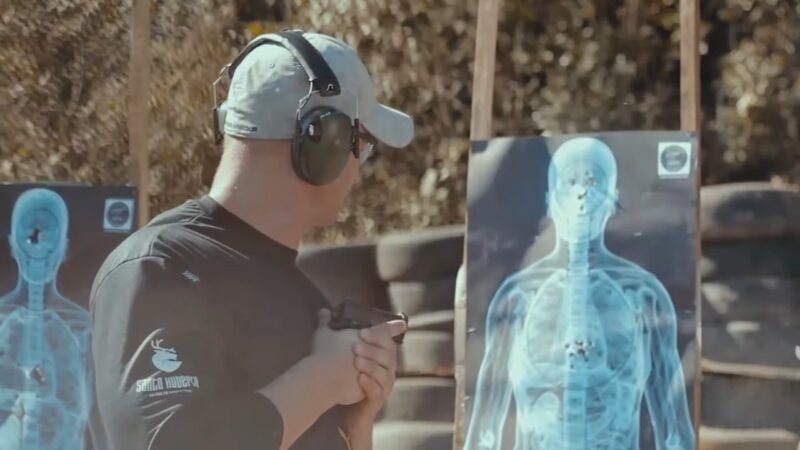
The CAR stance emphasizes a compact posture. The shooter stands with bent elbows, holding the gun close to the body.
This position not only minimizes the shooter’s profile, making them a more challenging target to hit but also adds to the overall control and maneuverability of the firearm. The close-held stance is particularly beneficial in close-quarters combat, where space is limited, and quick response is essential.
Muzzle Direction
A key principle of CAR is the consistent downward orientation of the muzzle. This approach ensures safety by preventing accidental discharges towards unintended targets.
Additionally, pointing the muzzle downward helps control muzzle rise during rapid firing, keeping the gun under control and aiding in quicker target reacquisition.
Variations of CAR

While the basic principles of CAR remain consistent, the system is adaptable, with several variations tailored to specific situations:
High CAR
This variation is used when the threat is at eye level or slightly above. By holding the firearm closer to the face, the shooter can acquire targets more quickly. High CAR is often employed in standing engagements where the shooter and target are on the same level.
Extended CAR
For longer-range engagements, the Extended CAR stance is suitable. In this variation, the shooter extends the firearm further from the body, similar to a traditional shooting stance.
This extension allows for more precise aiming at distant targets, providing a balance between the close-held principles of CAR and the needs of longer-range shooting.
Low CAR
When taking cover or shooting from a lower position, the Low CAR stance is employed. In this variation, the firearm is held at waist level, allowing the shooter to fire without fully exposing themselves.
Low CAR is particularly useful in situations where cover is essential, and the shooter must minimize exposure to threats.
Combat CAR
A more aggressive and dynamic stance, Combat CAR is used in fluid and rapidly changing situations. The shooter moves and engages targets with a focus on speed and agility.
This variation is often seen in tactical scenarios where quick decision-making and adaptability are key.
The Benefits and Drawbacks of the CAR Shooting Stance
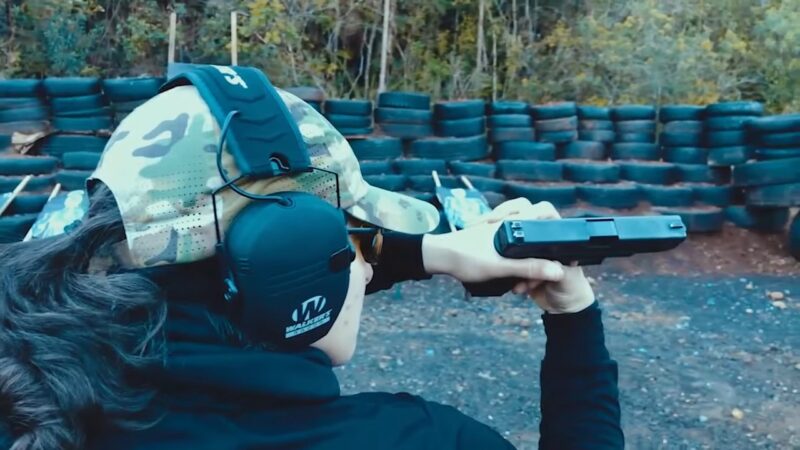
The Center Axis Relock (CAR) shooting stance has gained significant attention in the firearms community for its unique approach to close-quarters combat. Like any technique, it comes with its own set of advantages and disadvantages.
The Benefits of CAR
- Small Target Profile: One of the primary advantages of CAR is the minimized target profile it offers. In close-quarters battle (CQB) scenarios, reducing one’s profile can be the difference between life and death. By keeping the firearm close to the body and maintaining a compact posture, the shooter presents a smaller target to adversaries.
- Maximum Recoil Control: The unique grip and body alignment of CAR allow for superior recoil management. This is crucial for maintaining accuracy during rapid-fire sequences, ensuring that each shot lands where intended.
- Easy to Learn: Despite its unconventional appearance, many find CAR intuitive and straightforward to pick up. Its simplicity makes it an attractive option for both novices and seasoned marksmen.
- Efficiency in Close Quarters: CAR shines in tight spaces. The stance’s design facilitates quick target acquisition, nimble movements, and efficient gun handling, all essential attributes in CQB situations.
The Drawbacks of CAR
- Transitioning Difficulties: For those accustomed to traditional stances, adapting to CAR can pose challenges. The distinct grip and alignment can feel foreign, requiring dedicated practice to master.
- Physical Demands: Holding the CAR stance, especially for prolonged durations, can be physically taxing. The close-held position might strain the arms and shoulders over time.
- Limited Long-Range Efficacy: While CAR excels in close combat, it’s less optimal for distant engagements. The shooter’s body can obstruct the sightline, making target acquisition at range more challenging.
Mastering the Technique
The world of firearms training is vast, with numerous techniques designed to enhance a shooter’s effectiveness. Among these, the Center Axis Relock shooting stance stands out for its unique approach to close-quarters combat.
If you’re considering adopting the CAR technique, this blog post will guide you through the essential training steps and safety considerations.
Training: Step-by-Step
- Start Slow with Dry-Fire Exercises: Before diving into live-fire training, it’s crucial to familiarize yourself with the basics of the CAR stance. Dry-fire exercises, which involve practicing shooting techniques without live ammunition, are an excellent way to get a feel for the grip, posture, and movements associated with CAR. This foundational step ensures that you develop the right habits from the start, setting the stage for more advanced training.
- Transitioning Between Stances: Versatility is a key attribute for any shooter. While CAR offers distinct advantages in certain scenarios, there will be situations where other stances might be more appropriate. Practice transitioning smoothly between CAR and other common shooting stances. This not only enhances your adaptability but also reinforces muscle memory, ensuring that you can instinctively adopt the best stance for any given situation.
- Engage in Scenario-Based Training: Understanding a technique in theory is one thing; applying it in real-life scenarios is another. Engage in scenario-based training that simulates close-quarters battle (CQB) situations. This hands-on approach will give you practical insights into how CAR performs under pressure and will highlight areas for improvement. Whether it’s room clearing, target acquisition, or movement drills, scenario training is invaluable for mastering the CAR technique.
Safety First: Considerations
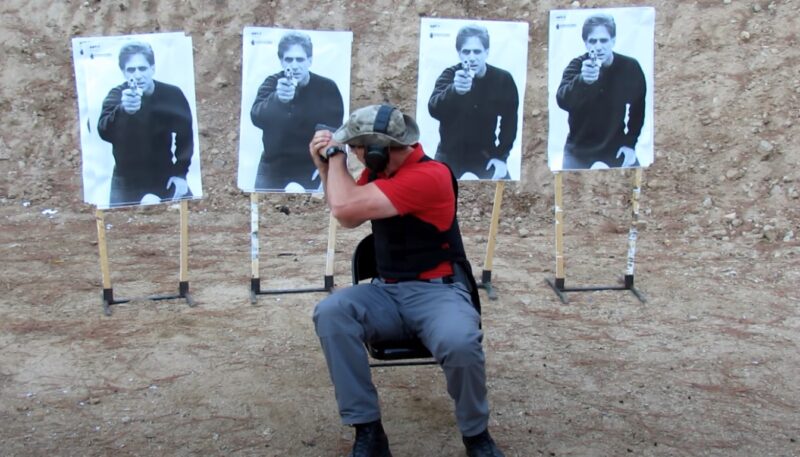
Muzzle Awareness: One of the foundational principles of firearm safety is always being aware of where your muzzle is pointing. Regardless of the stance or technique you’re practicing, ensure that the muzzle is always directed in a safe direction, away from unintended targets.
Finger Discipline: Your finger should only be on the trigger when you’re ready to shoot. At all other times, it should rest outside the trigger guard. This simple habit can prevent accidental discharges and is a cornerstone of safe firearm handling.
Regular Equipment: Checks Your firearm and associated gear are only as reliable as their condition allows. Regularly inspect your equipment to ensure it’s in optimal working order.
Check for signs of wear, malfunction, or damage, and address any issues promptly. A well-maintained firearm is not only more reliable but also safer.
FAQ
Is CAR right for me?
Whether or not CAR is right for you depends on your individual needs and goals. If you are looking for a versatile shooting stance that can be used in a variety of situations, then CAR may be a good choice for you.
However, if you are not comfortable with the CAR stance or if you do not have the time to practice it, then you may want to choose a different shooting stance.
How do I get started with CAR?
The best way to get started with CAR is to find a qualified instructor who can teach you the basics. There are many CAR training courses available online and in person.
Is CAR the best shooting stance?
There is no one “best” shooting stance. The best stance for you will depend on your individual needs and goals. CAR is a good choice for many people, but it is not the only option.
Final Words
The Center Axis Relock stance, with its distinct advantages and challenges, offers a fresh perspective on close-quarters shooting. While it may not replace traditional methods, it’s a valuable tool in the shooter’s arsenal, especially for those operating in tight spaces.
For those intrigued by CAR, we encourage dedicated training and practice to harness its full potential. Remember, the best stance is the one that works best for you in a given situation.
Explore, adapt, and stay safe!
